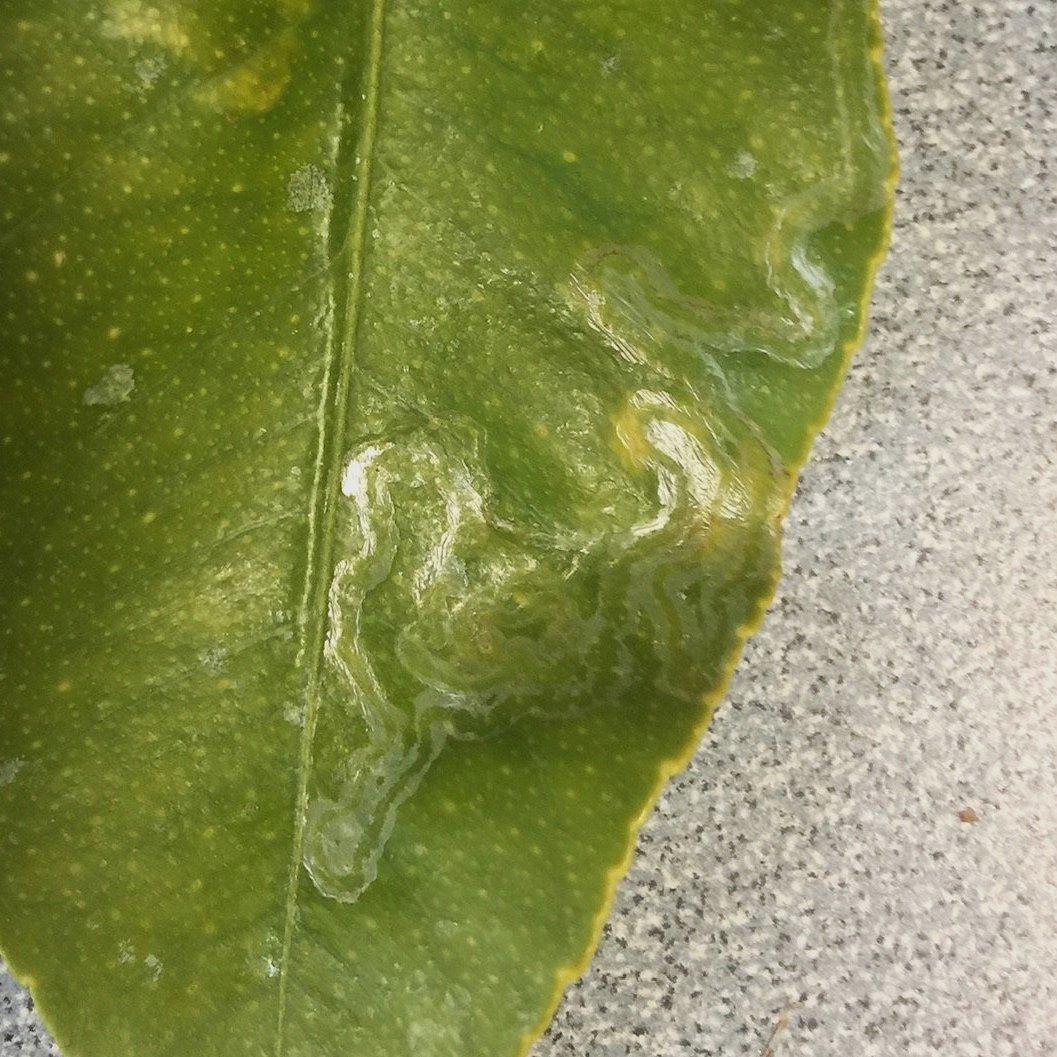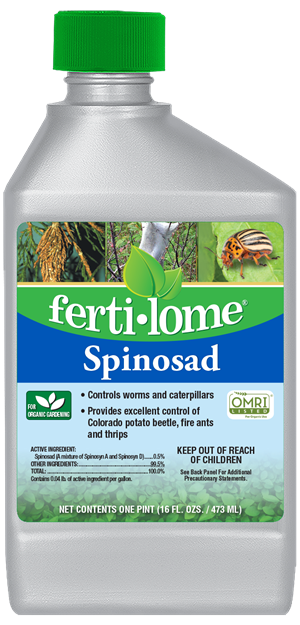What's on My Plant? - Citrus Leafminer
Citrus Leafminer
Citrus Leafminer (Phyllocnistis citrella) is a small, silvery moth that causes damage to the new fragile foliage of citrus. It is commonly found on oranges, mandarins, lemons, limes, grapefruit, kumquat and calamondin. The larvae feed and create distinctive, serpentine paths (mines) under the surface of the leaf. The larvae eventually move to the edge of the leaf and curls it around itself to pupate, resulting in a rolled and distorted leaf. The populations peak in summer and early fall.
Since citrus leafminer can impede the growth of young trees, the application of an insecticide is recommended, even though heavy infestations typically will not cause young trees to die. Mature citrus trees (over four years old) generally can withstand harm to new foliage without any impact on tree growth or fruit yield.
Cultural Control
Citrus leafminer moths are attracted to the new growth of citrus trees where they lay eggs. Damage can be reduced by discouraging growth flushes late in the growing season:
Avoid pruning live branches more than once a year.
Do not prune off leaves damaged by citrus leafminer, until well past the active infestation period.
Avoid applying nitrogen fertilizer during summer and fall.
Physical Control
Remove water sprouts (fast growing shoots that emerge from the trunk or tops of the branches) which can develop on mature trees, producing new leaves and serving as a site for infestation. Water sprouts often form when trees are over pruned in summer.
Biological Control
Citrus leafminers are killed by naturally occurring parasites and predators. Many native parasite species that attack other leafminer species will naturally locate citrus trees and attack citrus leafminer. You do not need to release parasites.
Monitoring: Traps baited with a pheromone attract male moths and are helpful in guiding you on the timing of insecticide application. However, they are not effective as a control tool by themselves and serve only for monitoring purposes. Hang a trap inside a citrus tree during March through November and check the trap weekly.
Chemical Control
Many “All Purpose” insecticides available for residential use do not effectively control citrus leafminer because they are unable to reach the larvae inside the mines. Do not spray citrus with broad-spectrum insecticides. This will have no impact on the active leaf minors and a negative effect on the development of beneficial insects.
Spinosad has been shown to be effective, however it has a short efficacy and needs to be applied every 7 to 14 days. This is a microbial insecticide that is from the naturally occurring bacterium Saccharopolyspora spinosa. Coordinate your application with any new activity in your traps as it is recommended that no more than six applications should be applied per season in order to avoid hurting beneficials. We carry Ferti-lome Spinosad in Concentrate and Ready to Use forms, approved for organic gardening.
Note: As with all chemical treatments, please read the instructions thoroughly before application
University of California Integrated Pest Management
https://ipm.ucanr.edu/PMG/PESTNOTES/pn74137.html



